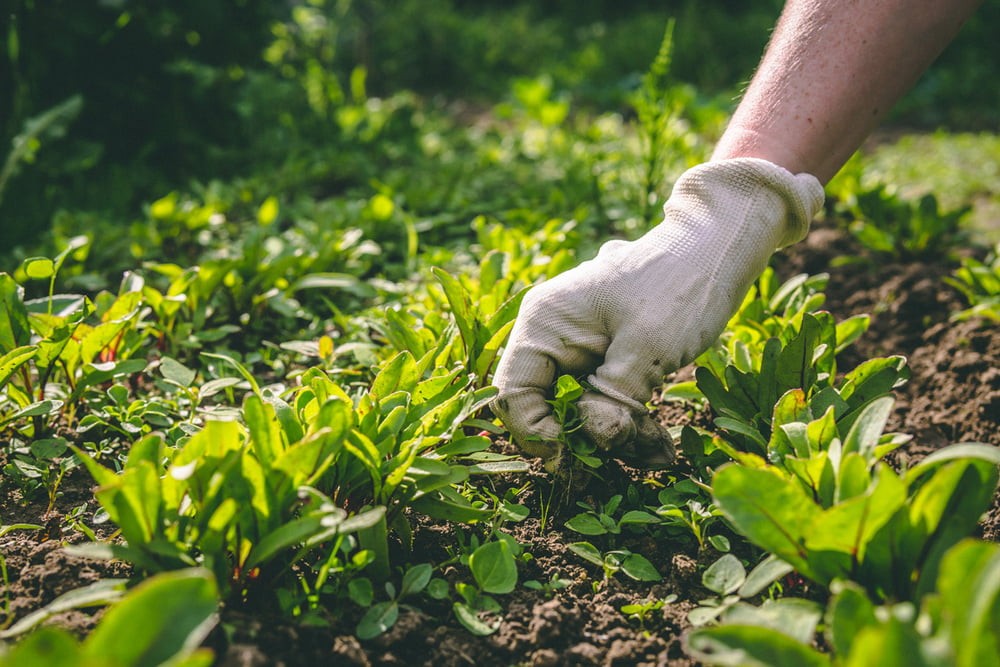Weeds are regularly removed in the vegetable garden as well as in the flower bed by most gardeners. But is that really necessary? We explain how you and your garden will benefit if you leave the weeds instead.
Weeds are various plants and wild herbs that grow in beds and pots without our intervention. In addition to dandelions, chickweed, nettles or thistles are often found here, for example. But even poisonous plants such as buttercups can appear as weeds in the garden.
Therefore, it is normal in many gardens to weed regularly. The background thought here is often the fear that the weeds could take away important nutrients from the vegetable or ornamental plants.
Weeds as a source of nutrients
In fact, however, plants obtain a large part of their energy and biomass through photosynthesis, i.e. CO2 from the air as well as sunlight. The soil is not deprived of so many nutrients that other plants suffer a deficiency as a result.
Weeds even return more nutrients to the soil when the plants eventually die and decompose. At the same time, they loosen the soil with their roots and can thus help to improve soil quality. Green manuring over the winter, for example with mustard seed, works on the same principle.
Weeds as indicator plants
Different weeds thrive depending on the nutrient content of the soil. They bind excess nutrients in the soil, protecting other plants from oversaturation and resulting damage. If you leave these weeds, the nutrient will gradually be returned to the soil as the plant dies. This keeps the soil in balance.
Indicator plants for nitrogen-rich soil are stinging nettles, chickweed, milkweed, dandelions and blackberries.
Acidic soil can be recognized by the indicator plants blueberry, heather and sorrel.
Cow parsley or field larkspur indicate a very calcareous soil.
Indicator plants for moist or wet soil are cabbage thistle, troll flower or field coltsfoot.
On soil contaminated with heavy metals, calamine violets thrive along with heavy metal turf.
Indicator plants can also point to compacted soil: Broad-leaved plantain and goose cinquefoil are often found here.
Conversely, you can also use the indicator plants to find a suitable location when you want to plant new plants.
Weeds as bee pasture
The lack of suitable bee plants due to industrial agriculture and flower-poor rock gardens is a weighty factor in species decline and insect mortality.
However, many weeds are the best plants for native pollinators, in part because the flower structure and local pollinators are evolutionarily better matched than flowering plants from other parts of the world.
By not weeding, you save yourself labor and promote native biodiversity at the same time.
Eat weeds?
Even though many people find weeds annoying, they are often valuable medicinal herbs or wild vegetables.
Chickweed, for example, tastes delicately like baby corn and is one of the first vitamin sources of spring.
Young dandelion leaves add a special note to salads and have a detoxifying effect with their bitter substances. Dandelion flowers can be used to make a syrup that gives drinks that certain something and also scores points as a honey substitute on the breakfast table.
Nettle seeds have a strong nutty taste and give energy. The young nettle leaves have a dehydrating effect as a tea and provide an extra portion of vitamins and minerals in a green smoothie.
Important: Before you consume the wild herbs, make absolutely sure that the plant is edible and you have not accidentally caught a poisonous twin.
As long as the weeds in the garden do not become so rampant, it is not necessary to weed the garden thoroughly every week. If you leave the weeds alone, you’ll not only save yourself the work, but you’ll be doing your garden and the environment a big favor. If you still want to know how to remove weeds, read here.


